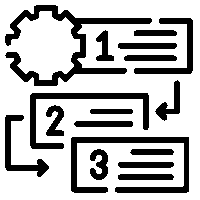ELA-02.F.08
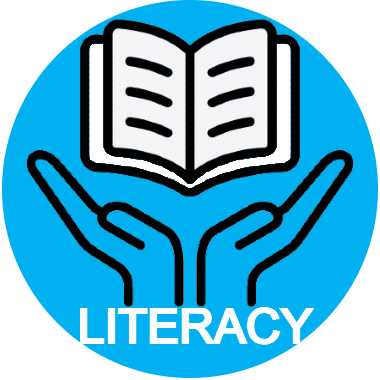
|
2nd Grade (ELA) Targeted Standard
(F) Foundations of Literacy
(PWS) Phonics and Word Study
Learners will decode, encode, and connect meaning to word parts and words.
|
ELA-02.F.08 Decode words with phoneme-grapheme correspondences:*
 Proficiency Scale Proficiency Scale
Sub-Standards
- (a.) vowel teams
- (b.) diphthongs
- (c.) three consonant blends
- (d.) other r-controlled
- (e.) silent e in multisyllabic words
- (f.) r-controlled in multisyllabic words
- (g.) vowel team in multisyllabic words
- (h.) consonant le
- (i.) homophones
- (j.) irregularly spelled high-frequency words
- (k.) silent letter combinations
- (l.) schwa
- (m.) common derivational suffixes (e.g., -ly, -ful, -able)
Progressions
Standard F.08: Decoding Words
- ELA-00.F.08 Decode words with phoneme-grapheme correspondences:*
- ELA-01.F.08 Decode words with phoneme-grapheme correspondences:*
- ELA-02.F.08 Decode words with phoneme-grapheme correspondences:*
- ELA-03.F.08 Decode words with phoneme-grapheme correspondences:*
- ELA-04.F.08 Decode words using the combined knowledge of syllabication patterns and morphology in context and out of context:*
- ELA-05.F.08 Decode words using the combined knowledge of syllabication patterns and morphology in context and out of context:*
|
|
ELA-02.F.09

|
2nd Grade (ELA) Targeted Standard
(F) Foundations of Literacy
(PWS) Phonics and Word Study
Learners will decode, encode, and connect meaning to word parts and words.
|
ELA-02.F.09 Encode words with phoneme-grapheme correspondences:*
 Proficiency Scale Proficiency Scale
Sub-Standards
- (a.) closed and open syllables
- (b.) vowel teams
- (c.) soft and hard c and g; s as /z/
- (d.) r-controlled
- (e.) prefixes and suffixes
- (f.) functions of y
- (g.) contractions
- (h.) irregularly spelled high-frequency words
Progressions
Standard F.09: Encoding Words (Spelling)
- ELA-00.F.09 Encode words with phoneme-grapheme correspondences:*
- ELA-01.F.09 Encode words with phoneme-grapheme correspondences:*
- ELA-02.F.09 Encode words with phoneme-grapheme correspondences:*
- ELA-03.F.09 Encode words with phoneme-grapheme correspondences:*
- ELA-04.F.09 Encode words using the combined knowledge of syllabication patterns and morphology in context and out of context:*
- ELA-05.F.09 Encode words using the combined knowledge of syllabication patterns and morphology in context and out of context:*
|
|
ELA-02.F.12

|
2nd Grade (ELA) Targeted Standard
(F) Foundations of Literacy
(F) Fluency
Learners will read with sufficient accuracy, rate, and expression to support comprehension.
|
ELA-02.F.12 Read accurately and automatically a variety of second-grade texts with expression, phrasing, purpose, and understanding.
 Proficiency Scale Proficiency Scale
Progressions
Standard F.12: Oral Reading Fluency
- ELA-00.F.12 Demonstrate fluency through the application of phonemic and phonological skills.*
- ELA-01.F.12 Read accurately and automatically.*
- ELA-02.F.12 Read accurately and automatically a variety of second-grade texts with expression, phrasing, purpose, and understanding.*
- ELA-03.F.12 Read accurately and automatically a variety of third-grade texts with expression, phrasing, purpose, and understanding.*
- ELA-04.F.12 Read accurately and automatically a variety of fourth-grade texts using expression, phrasing, purpose, and understanding.*
- ELA-05.F.12 Read accurately and automatically a variety of fifth-grade texts with expression, phrasing, purpose, and understanding.*
|
|
ELA-02.F.14

|
2nd Grade (ELA) Targeted Standard
(F) Foundations of Literacy
(FW) Foundations of Writing
Learners will write complete sentences and paragraphs.
|
ELA-02.F.14 Write a paragraph including multiple complete sentences on a topic. *
 Proficiency Scale Proficiency Scale
Progressions
Standard F.14: Sentence and Paragraph Writing
- ELA-00.F.14 Write a simple sentence using subject and predicate, with capital letters, punctuation, and appropriate word spacing.
- ELA-01.F.14 Write simple sentences using subject and predicate, with capital letters, punctuation, and appropriate word spacing.
- ELA-02.F.14 Write a paragraph including multiple complete sentences on a topic. *
- ELA-03.F.14 Write an organized paragraph with a topic sentence, supporting sentences, and a conclusion.
- ELA-04.F.14 Write an organized paragraph that includes a topic sentence, multiple supporting sentences, and a concluding sentence.*
- ELA-05.F.14 Write multiple organized paragraphs that include a topic sentence, multiple supporting sentences, and a concluding sentence.*
|
|
ELA-02.R.01
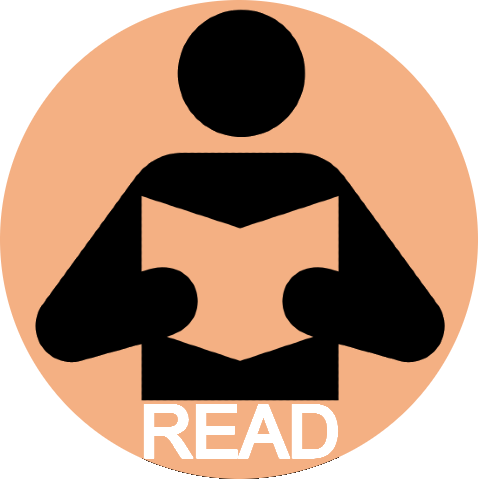
|
2nd Grade (ELA) Targeted Standard
(R) Reading
(C) Comprehension
Learners will read to understand a variety of complex literary and informational texts.
|
ELA-02.R.01 Comprehend information during and after listening to a grade-level text.*
 Proficiency Scale Proficiency Scale
Progressions
Standard R.01: Listening Comprehension
- ELA-02.R.01 Comprehend information during and after listening to a grade-level text.*
- ELA-03.R.01 Comprehend information during and after listening to a grade-level text.*
- ELA-04.R.01 Comprehend information during and after listening to a grade-level text.*
- ELA-05.R.01 Comprehend information during and after listening to a grade-level text.*
|
|
ELA-02.R.02

|
2nd Grade (ELA) Targeted Standard
(R) Reading
(C) Comprehension
Learners will read to understand a variety of complex literary and informational texts.
|
ELA-02.R.02 Ask and answer questions about key details before, during, and after reading a variety of literary and informational texts to compare, contrast, predict, or infer.*
 Proficiency Scale Proficiency Scale
Progressions
Standard R.02: Text Comprehension/Inferences
- ELA-00.R.02 Respond to a variety of texts, photographs, or illustrations before, during, and after shared reading or other text-listening experiences to compare, contrast, predict, or infer.
- ELA-01.R.02 Ask and answer questions about a variety of texts, genres, photographs, or illustrations before, during, and after shared reading or other text-listening experiences to compare, contrast, predict, or infer.
- ELA-02.R.02 Ask and answer questions about key details before, during, and after reading a variety of literary and informational texts to compare, contrast, predict, or
infer.*
- ELA-03.R.02 Ask and answer questions about key details before, during, and after reading a variety of genres, literary, and informational texts using text evidence to
compare, contrast, predict, and infer.*
- ELA-04.R.02 Make inferences while reading a variety of genres, literary, and informational texts; providing text evidence.*
- ELA-05.R.02 Make inferences drawn from the text during and after reading a variety of genres, literary, and informational texts.*
- ELA-06.R.02 Comprehend a variety of texts while developing inferences and providing supportive textual evidence.
- ELA-07.R.02 Comprehend a variety of texts while developing inferences and providing supportive textual evidence and reasoning.
- ELA-08.R.02 Comprehend a variety of texts while developing inferences and providing relevant textual evidence and reasoning.
- ELA-09.R.02 Comprehend a variety of texts with multiple levels of complexity while developing inferences and providing relevant textual evidence and reasoning.
- ELA-10.R.02 Comprehend a variety of texts with multiple levels of complexity while developing inferences and providing relevant textual evidence and reasoning.
- ELA-11.R.02 Comprehend a variety of texts with multiple levels of complexity while developing inferences and providing relevant textual evidence and reasoning.
- ELA-12.R.02 Comprehend a variety of texts with multiple levels of complexity while developing inferences and providing relevant textual evidence and reasoning.
|
|
ELA-02.R.03a

|
2nd Grade (ELA) Targeted Standard
(R) Reading
(C) Comprehension
Learners will read to understand a variety of complex literary and informational texts.
|
ELA-02.R.03a Identify the main idea with supporting details during or after reading an informational text or passage.*
 Proficiency Scale Proficiency Scale
Progressions
Standard R.03a: Summarizing Nonfiction Text
- ELA-00.R.03a Tell about the informational text, photographs, or illustrations before, during, or after a shared reading or other text-listening experience.*
- ELA-01.R.03a Identify the topic of an informational text, photograph, or illustration during or after a shared reading or other text-listening experiences.*
- ELA-02.R.03a Identify the main idea with supporting details during or after reading an informational text or passage.*
- ELA-03.R.03a Summarize the main idea(s) with supporting details during or after reading an informational text or passage.*
- ELA-04.R.03a Summarize an informational text or passage, stating the main idea(s) and providing supporting details.*
- ELA-05.R.03a Summarize an informational text or passage, stating the main idea(s) and providing supporting details.*
- ELA-06.R.03a Summarize nonfiction texts objectively, including relevant details.
- ELA-07.R.03a Summarize and/or paraphrase nonfiction texts objectively, including relevant details and avoiding unnecessary information.
- ELA-08.R.03a Summarize and/or paraphrase nonfiction texts objectively, including relevant details and avoiding unnecessary information.
- ELA-09.R.03a Summarize and/or paraphrase nonfiction texts objectively, including relevant information.
- ELA-10.R.03a Summarize and/or paraphrase nonfiction texts objectively, including relevant information.
- ELA-11.R.03a Summarize and/or paraphrase nonfiction texts objectively, including relevant information.
- ELA-12.R.03a Summarize and/or paraphrase nonfiction texts objectively, including relevant information.
|
|
ELA-02.R.03b

|
2nd Grade (ELA) Targeted Standard
(R) Reading
(C) Comprehension
Learners will read to understand a variety of complex literary and informational texts.
|
ELA-02.R.03b Retell the plot to include the beginning, middle, and end of a literary text after reading.*
 Proficiency Scale Proficiency Scale
Progressions
Standard R.03b: Summarize Literary Text
- ELA-00.R.03b Tell about characters and setting in a literary text during or after a shared reading or other text-listening experience.*
- ELA-01.R.03b Identify characters, setting, and plot in a literary text during or after a shared reading or other text-listening experience.*
- ELA-02.R.03b Retell the plot to include the beginning, middle, and end of a literary text after reading.*
- ELA-03.R.03b Summarize the story by including major story elements after reading a literary text or passage.*
- ELA-04.R.03b Summarize the story by including major story elements after reading a literary text or passage.*
- ELA-05.R.03b Summarize a story by including major story elements after reading a literary text.*
- ELA-06.R.03b Summarize literary texts objectively, including relevant details.
- ELA-07.R.03b Summarize and/or paraphrase literary texts objectively, including relevant details and avoiding unnecessary information.
- ELA-08.R.03b Summarize and/or paraphrase literary texts objectively, including relevant details and avoiding unnecessary information.
- ELA-09.R.03b Summarize and/or paraphrase literary texts objectively, including relevant information.
- ELA-10.R.03b Summarize and/or paraphrase literary texts objectively, including relevant information.
- ELA-11.R.03b Summarize and paraphrase literary texts objectively, including relevant information.
- ELA-12.R.03b Summarize and paraphrase literary texts objectively, including relevant information.
|
|
ELA-02.R.05

|
2nd Grade (ELA) Targeted Standard
(R) Reading
(C) Comprehension
Learners will read to understand a variety of complex literary and informational texts.
|
ELA-02.R.05 Determine the meaning of unknown words and phrases through a variety of text experiences.*
 Proficiency Scale Proficiency Scale
Progressions
Standard R.05: Use Text to Determine Word Meaning
- ELA-00.R.05 Determine the meaning of unknown and multiple-meaning words and phrases through read-alouds or other text-listening experiences.*
- ELA-01.R.05 Determine the meaning of unknown and multiple-meaning words and phrases through read-alouds or other text-listening experiences.*
- ELA-02.R.05 Determine the meaning of unknown words and phrases through a variety of text experiences.*
- ELA-03.R.05 Determine the meaning of unknown and multi-meaning words within a text.*
- ELA-04.R.05 Determine the meaning of unknown and multiple-meaning words and phrases within a text.*
- ELA-05.R.05 Determine the meaning of unknown and multiple-meaning words and phrases within a text.*
- ELA-06.R.05 Determine the meaning of words and phrases as they are used in the text, including figurative, denotative, and connotative meanings.
- ELA-07.R.05 Determine the meaning and purpose of words and phrases as they contribute to the text, including figurative, denotative, and connotative meanings.
- ELA-08.R.05 Determine the meaning and purpose of words and phrases as they contribute to the text, including figurative, denotative, and connotative meanings.
- ELA-09.R.05 Determine the meaning and purpose of words and phrases as they are used in the text, including academic vocabulary, figurative, ambiguous, and connotative meanings.
- ELA-10.R.05 Determine the meaning and purpose of words and phrases as they are used in the text, including academic vocabulary, figurative, ambiguous, and connotative meanings.
- ELA-11.R.05 Determine the meaning, purpose, and impact of words and phrases as they are used in the text, including academic vocabulary, figurative, ambiguous, and connotative meanings.
- ELA-12.R.05 Determine the meaning, purpose, and impact of words and phrases as they are used in the text, including academic vocabulary, figurative, ambiguous, and connotative meanings.
|
|
ELA-02.R.06

|
2nd Grade (ELA) Targeted Standard
(R) Reading
(TA) Text Analysis
Learners will analyze, interpret, and evaluate complex literary and informational texts that include a wide variety of genres and formats.
|
ELA-02.R.06 Identify text features (e.g., timeline, maps/legends, graphs/charts, subheadings) and use previously learned text features (e.g., table of contents, headings, captions, diagrams, bold/underlined words) to read and understand a text or passage.*
 Proficiency Scale Proficiency Scale
Progressions
Standard R.06: Text Features and Structure
- ELA-00.R.06 Identify photographs, illustrations, and labels during or after a shared reading or other text-listening experience.
- ELA-01.R.06 Recognize basic text features during or after a shared reading or other text-listening experience.
- ELA-02.R.06 Identify text features and use previously learned text features to read and understand a text or passage.*
- ELA-03.R.06 Use text features and previously learned text features to read and understand a text or passage.*
- ELA-04.R.06 Determine the structure of an informational text: ELA-05.R.06 Describe the structure of informational texts:
- ELA-06.R.06 Describe how a paragraph, chapter, stanza, or section fits into the overall structure of a text and contributes to the development of ideas.
- ELA-07.R.06 Analyze the structure an author uses to organize a text, including how the major sections or stanzas contribute to the whole and the development of ideas, and the overall purpose of the text.
- ELA-08.R.06 Analyze the structure an author uses to organize a text, including how sections, paragraphs, stanzas, and/or particular sentences contribute to the development of ideas and the overall purpose of the text.
- ELA-09.R.06 Analyze how the author's choice in structure, form, and format supports the purpose, contributes to the meaning, or impacts the audience.
- ELA-10.R.06 Analyze how the author's choice in structure, form, and format supports the purpose, contributes to the meaning, or impacts the audience.
- ELA-11.R.06 Analyze and evaluate how the author's choice in structure, form, and format supports the purpose, contributes to the meaning, or impacts the audience.
- ELA-12.R.06 Analyze and evaluate how the author's choice in structure, form, and format supports the purpose, contributes to the meaning, or impacts the audience.
|
|
ELA-02.wL.01
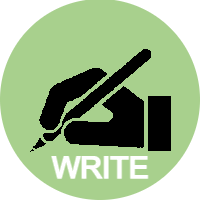
|
2nd Grade (ELA) Targeted Standard
(Wr) Writing
(LU) Language Usage
Learners will integrate appropriate language and style to ensure effective readability in writing.
|
ELA-02.wL.01 Compose simple and compound sentences.*
 Proficiency Scale Proficiency Scale
Progressions
Standard wL.01: Language Mechanics (K-5)/Language Mechanics and Grammar (6-12)
- ELA-00.wL.01 Compose a simple sentence.*
- ELA-01.wL.01 Compose simple sentences.*
- ELA-02.wL.01 Compose simple and compound sentences.*
- ELA-03.wL.01 Compose simple and compound declarative, interrogative, imperative, and exclamatory sentences.*
- ELA-04.wL.01 Compose simple and compound declarative, interrogative, imperative, and exclamatory sentences.*
- ELA-05.wL.01 Compose simple, compound, and complex sentences.*
- ELA-06.wL.01 Apply language knowledge for a specific task, purpose, intention, and audience, resolving issues of usage as needed.
- ELA-07.wL.01 Apply language knowledge for a specific task, purpose, intention, and audience, resolving issues of usage as needed.
- ELA-08.wL.01 Apply language knowledge for specific tasks, purposes, intentions, and audience, resolving usage issues as needed.
- ELA-09.wL.01 Apply language knowledge for a specific task, purpose, intention, and audience, resolving issues of usage as needed.
- ELA-10.wL.01 Apply language knowledge for a specific task, purpose, intention, and audience, resolving issues of usage as needed.
- ELA-11.wL.01 Apply language knowledge for a specific task, purpose, and audience, resolving issues of usage as needed.
- ELA-12.wL.01 Apply language knowledge for a specific task, purpose, and audience, resolving issues of usage as needed.
|
|
ELA-02.wL.02

|
2nd Grade (ELA) Targeted Standard
(Wr) Writing
(LU) Language Usage
Learners will integrate appropriate language and style to ensure effective readability in writing.
|
ELA-02.wL.02 Recognize and use parts of speech in sentences:*
 Proficiency Scale Proficiency Scale
Progressions
Standard L.02: Grammar (K-5)
- ELA-00.wL.02 Identify parts of speech in sentences orally, with illustrations, or in writing:*
- ELA-01.wL.02 Recognize and use parts of speech in sentences:*
- ELA-02.wL.02 Recognize and use parts of speech in sentences:*
- ELA-03.wL.02 Recognize and use parts of speech in sentences:*
- ELA-04.wL.02 Recognize and use parts of speech in sentences:*
- ELA-05.wL.02 Recognize and use previous grade levels' parts of speech in simple, compound, and complex sentences.*
|
|
ELA-02.Wr.01

|
2nd Grade (ELA) Targeted Standard
(Wr) Writing
(TTS) Text Types and Structure
Learners will engage in the writing process and produce a variety of texts determined to address different audiences and purposes.
|
ELA-02.Wr.01 Produce writing appropriate to the task, purpose, or audience.*
 Proficiency Scale Proficiency Scale
Progressions
Standard Wr.01: Development and Purpose of Writing
- ELA-00.Wr.01 Produce writing through shared and interactive experiences in which the development and organization are appropriate to the task, purpose, or audience.*
- ELA-01.Wr.01 Produce writing through shared and interactive experiences in which the development and organization are appropriate to the task, purpose, or audience.*
- ELA-02.Wr.01 Produce writing appropriate to the task, purpose, or audience.*
- ELA-03.Wr.01 Produce writing that is organized appropriately to the task, purpose, or audience.*
- ELA-04.Wr.01 Produce clear writing in which the development and organization are appropriate to the task, purpose, or audience.*
- ELA-05.Wr.01 Produce clear writing in which the development and organization are appropriate to the task, purpose, or audience.*
- ELA-06.Wr.01 Produce clear writing organized according to the task, purpose, and audience.
- ELA-07.Wr.01 Produce clear and coherent writing organized according to the task, purpose, and audience.
- ELA-08.Wr.01 Produce clear and coherent writing organized logically according to the task, purpose, and audience.
- ELA-09.Wr.01 Write clearly and coherently with appropriate content, format, and style to accomplish a specific purpose for a target audience.
- ELA-10.Wr.01 Write clearly and coherently with appropriate content, format, and style to accomplish a specific purpose for a target audience.
- ELA-11.Wr.01 Write clearly and coherently with appropriate content, format, and style to accomplish a specific purpose for a target audience.
- ELA-12.Wr.01 Write clearly and coherently with appropriate content, format, and style to accomplish a specific purpose for a target audience.
|
|
ELA-02.Wr.02

|
2nd Grade (ELA) Targeted Standard
(Wr) Writing
(TTS) Text Types and Structure
Learners will engage in the writing process and produce a variety of texts determined to address different audiences and purposes.
|
ELA-02.Wr.02 Write using an organizational structure that introduces a topic, includes supporting sentences, and provides a sense of closure.*
 Proficiency Scale Proficiency Scale
Progressions
Standard Wr.02: Organizational Structure
- ELA-02.Wr.02 Write using an organizational structure that introduces a topic, includes supporting sentences, and provides a sense of closure.*
- ELA-03.Wr.02 Write using an organizational structure incorporating a topic sentence, body, and a concluding statement appropriate to the task.*
- ELA-04.Wr.02 Write using an organizational structure incorporating an introductory paragraph, a body, and a concluding section appropriate to the task.*
- ELA-05.Wr.02 Write using an organizational structure incorporating an introductory paragraph, multiple paragraphs (body), and a concluding section appropriate to the task.*
- ELA-06.Wr.02 Write using a clear organizational structure incorporating an introduction, transitions, body paragraph(s), and a conclusion appropriate to the task.
- ELA-07.Wr.02 Write using a clear organizational structure incorporating an introduction, transitions, body paragraph(s), and a conclusion appropriate to the task.
- ELA-08.Wr.02 Write using a clear organizational structure incorporating an introduction, transitions, body paragraph(s), and a conclusion appropriate to the task.
- ELA-09.Wr.02 Create a logical organizational structure with: relevant introduction, and transitional words or phrases to connect the major sections, paragraphs, and sentences, and an appropriate conclusion.
- ELA-10.Wr.02 Create a logical organizational structure with: relevant introduction, and transitional words or phrases to connect the major sections, paragraphs, and sentences, and an appropriate conclusion.
- ELA-11.Wr.02 Create a logical organizational structure with a relevant introduction, and transitional words or phrases to connect the major sections, paragraphs, plus sentences creating a unified whole, and an appropriate
and thoughtful conclusion.
- ELA-12.Wr.02 Create a logical organizational structure with a relevant introduction, and transitional words or phrases to connect the major sections, paragraphs, plus sentences creating a unified whole, and an appropriate
and thoughtful conclusion.
|
|

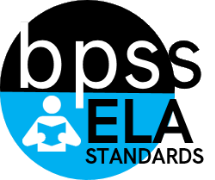
 (F)
(F)
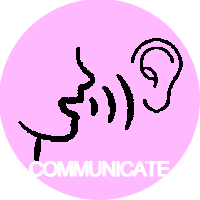 (C)
(C)
 (R)
(R)
 (Wr)
(Wr)
 (IR)
(IR)
